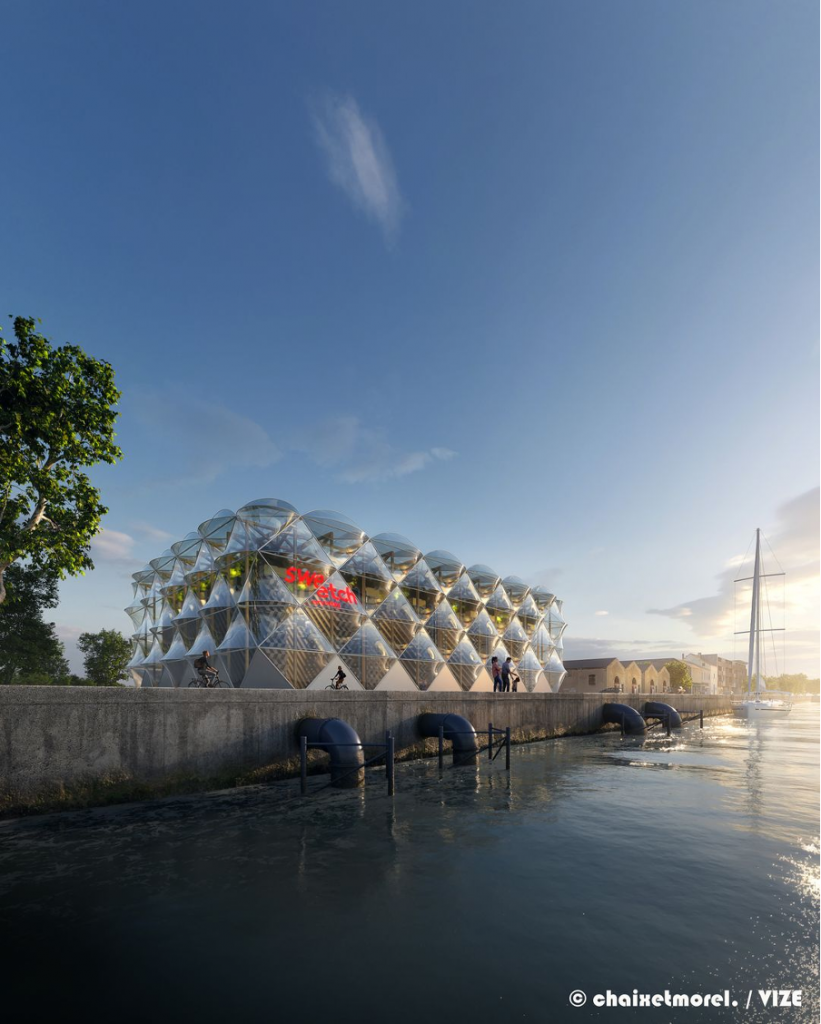By ESG Analyst Tanguy Montandon

Industrial projects (sweetch.energy)
Limited renewable energy options
While evidence is continuously building that renewable energies have a high potential to generate a substantial share of our energy consumption, the sources of these renewable energies remain limited. On top of that, the two main contenders to produce renewable energy at a large scale, wind and solar, share a similar drawback-that is, they cannot generate energy at all times during the day. It is however important that acknowledging this challenge does not imply a dead end for our energy transition, as a large-scale deployment of these energies, coupled with adequate energy storage can help us overcome it. Moreover, electric vehicle batteries could help meet short-term grid storage demand by 2030 (Xu et al., 2023). Having said that, the development of new renewable energy technologies is making the challenge of transitioning our energy generation from fossil fuels to renewable sources easier.
Sweetch and osmotic power
This is the reason the recent developments in osmotic energy achieved by Sweetch, a startup founded in 2015, are particularly exciting. Osmotic power is generated by harnessing the difference in salinity between fresh river water and sea water when they meet. When separated by a semi-permeable membrane freshwater migrates by osmosis towards salt water, which increases the pressure of salt power and powers a turbine that can be harvested as mechanical or electrical energy. As such, osmotic power plants can be located near estuaries, at the intersection between river water and seawater, and can be complementary to hydroelectricity. Interestingly, major technological breakthroughs have been made with semi-permeable nano-scale membranes, allowing Sweetch’s to develop its INOD technology, specifically designed for harnessing osmotic energy. Although osmotic plants have already been running in some contexts, such as in Sicily and Norway, their yield is too low to be economically viable. Consequently, Sweetch claims to have developed the only solution in the world that can continuously convert salt water into electricity at a competitive price and with little space, yielding around 20 to 30 watts per square meter (Sweetch, 2023). Moreover, the INOD technology is modular, making it possible to tailor systems to the amount of space available, to be installed as small or large units. It also has the advantage of being compact, silent, bio-sourced and that it does not emit any toxicity.
A global opportunity
Globally and every year, nearly 30,000 TWh of osmotic energy is released from the world’s deltas and estuaries, representing more than the world’s total electricity demand. If harvested, 17,000 TWh could theoretically be generated every year – the equivalent of nearly 2,000 nuclear plants (El Bassam, 2021).
Recent traction
Hoping to leverage this opportunity, in 2024 OsmoRhône 1, in the south of France, will be up and running as the first Sweetch osmotic power station. It is expected that 500 MW of power will be gradually installed and distributed along the Rhône over the next decade, the equivalent of decarbonized electricity for over 1.5 million people, or the populations of Montreal, Amsterdam, or Barcelona. Benefiting from a more than decent traction, Sweetch has raised so far nearly 40 million euros from private and public funds to accelerate the industrial and commercial development of osmotic energy. As well, Sweetch won the 2023 Hello Tomorrow Global Challenge, an annual global deep tech summit that hosts 4000 startups from 115 countries.

References:
El Bassam, N. (2021). Chapter Eighteen—Technologies at the experimental stages. In N. El Bassam (Ed.), Distributed Renewable Energies for Off-Grid Communities (Second Edition) (pp. 435–442). Elsevier.https://doi.org/10.1016/B978-0-12-821605-7.00009-X
Roussange, G. (2024, January 4). Sweetch energy prépare un démonstrateur qui va Créer de l’électricité grâce aux Estuaires. Les Echos. https://www.lesechos.fr/start-up/impact/sweetch-energy-prepare-un-demonstrateur-qui-va-creer-de-lelectricite-grace-aux-estuaires-2044258
Sweetch. (2024). https://www.sweetch.energy/
Xu, C., Behrens, P., Gasper, P., Smith, K., Hu, M., Tukker, A., & Steubing, B. (2023). Electric vehicle batteries alone could satisfy short-term grid storage demand by as early as 2030. Nature Communications, 14(1), Article 1. https://doi.org/10.1038/s41467-022-35393-0
